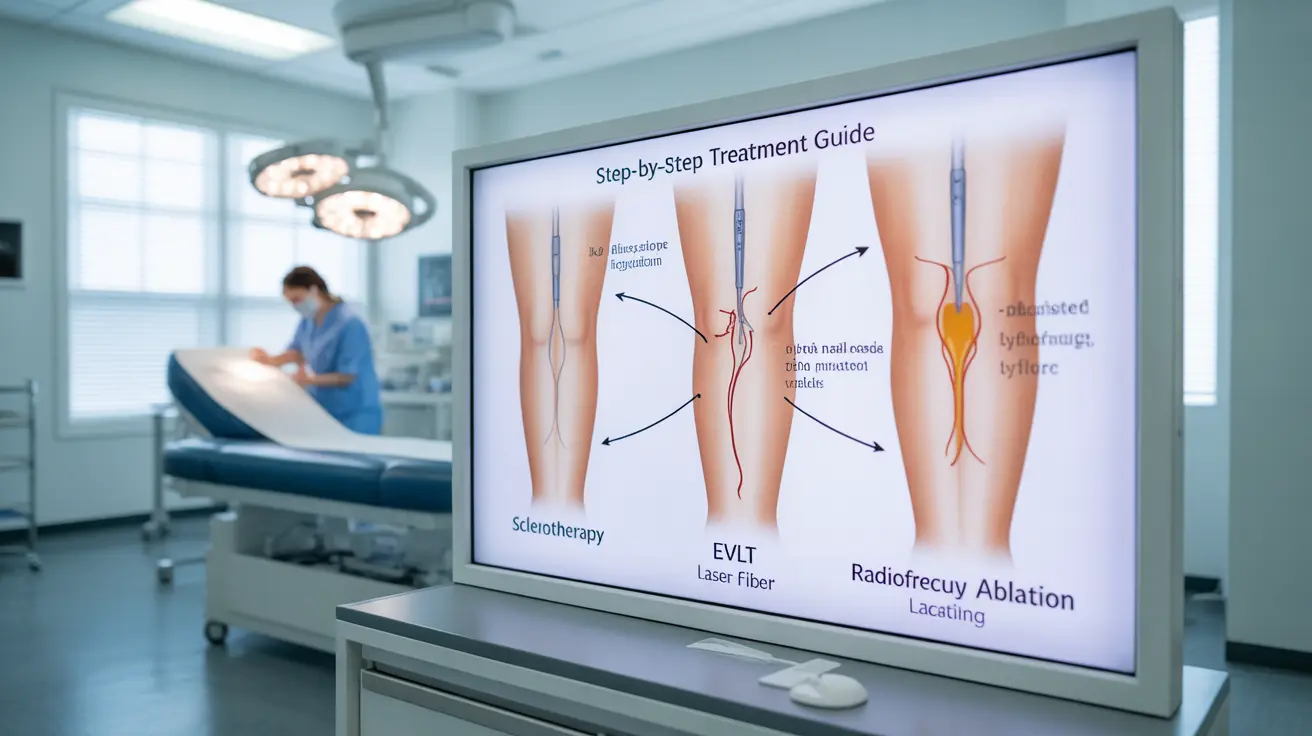Living with varicose veins can be both uncomfortable and concerning, but modern medicine offers several effective non-surgical treatment options. These minimally invasive procedures provide relief from symptoms and improved vein appearance without the need for traditional surgery. Understanding your options can help you make an informed decision about the best treatment path for your specific situation.
In this comprehensive guide, we'll explore the various non-surgical treatments available for varicose veins, their effectiveness, recovery times, and what you can expect during these procedures. We'll also discuss how to determine which treatment might be right for you based on your symptoms and vein characteristics.
Types of Non-Surgical Varicose Vein Treatments
Sclerotherapy
Sclerotherapy is one of the most common non-surgical treatments for varicose veins. During this procedure, a special solution is injected directly into the affected veins, causing them to collapse and eventually fade. This treatment is particularly effective for smaller varicose veins and spider veins.
Endovenous Laser Treatment (EVLT)
EVLT uses targeted laser energy to seal problematic veins from the inside. A thin fiber is inserted into the vein through a tiny entry point, and laser heat causes the vein to close. This treatment is highly effective for larger varicose veins and has become increasingly popular due to its precision and minimal downtime.
Radiofrequency Ablation
Similar to EVLT, radiofrequency ablation uses heat energy to seal affected veins. However, it employs radio waves instead of laser energy. This treatment is known for causing less post-procedure discomfort compared to some other options.
Determining the Right Treatment Option
Several factors influence which non-surgical treatment might be most appropriate for your situation:
- Size of affected veins
- Location of varicose veins
- Severity of symptoms
- Overall health status
- Previous treatments received
The Treatment Process
Before Treatment
Prior to any non-surgical procedure, you'll undergo a thorough evaluation including an ultrasound examination to map your veins and determine the best treatment approach. Your healthcare provider will review your medical history and discuss any necessary preparation steps.
During Treatment
Most non-surgical varicose vein treatments are performed under local anesthesia in an outpatient setting. Procedures typically take between 30 minutes to an hour, depending on the extent of treatment needed. You'll be able to walk immediately afterward and return home the same day.
Recovery and Aftercare
Recovery from non-surgical varicose vein treatments is generally straightforward, but following proper aftercare instructions is crucial for optimal results:
- Wear compression stockings as directed
- Maintain regular walking and light activity
- Avoid strenuous exercise for 1-2 weeks
- Keep follow-up appointments
- Monitor for any unusual symptoms
Frequently Asked Questions
What are the most effective non-surgical treatments available for varicose veins?
The most effective non-surgical treatments include sclerotherapy, endovenous laser treatment (EVLT), and radiofrequency ablation. Each has success rates above 90% when properly administered to suitable candidates.
How long does recovery typically take after non-surgical varicose vein treatments like sclerotherapy or laser ablation?
Recovery typically takes 1-2 weeks for most patients. While you can return to normal activities immediately, full recovery and visible results may take several weeks to months, depending on the treatment type and extent of the condition.
What symptoms or vein sizes are best suited for non-invasive varicose vein procedures?
Small to medium-sized veins (2-6mm) are ideal for sclerotherapy, while larger veins (6-12mm) respond better to EVLT or radiofrequency ablation. The best candidates have visible varicose veins with symptoms like aching, swelling, or heaviness.
Are non-surgical varicose vein treatments painful, and what can I expect during the procedure?
Most patients experience minimal discomfort during treatment thanks to local anesthesia. You may feel slight pressure or mild burning during the procedure. Post-treatment discomfort is typically mild and can be managed with over-the-counter pain relievers.
How can I speed up healing and reduce side effects after undergoing non-surgical varicose vein treatment?
To optimize healing, follow your doctor's instructions carefully, wear compression stockings as directed, stay active with regular walking, maintain good hydration, and avoid prolonged sitting or standing. Elevating your legs when resting can also help reduce swelling and discomfort.




